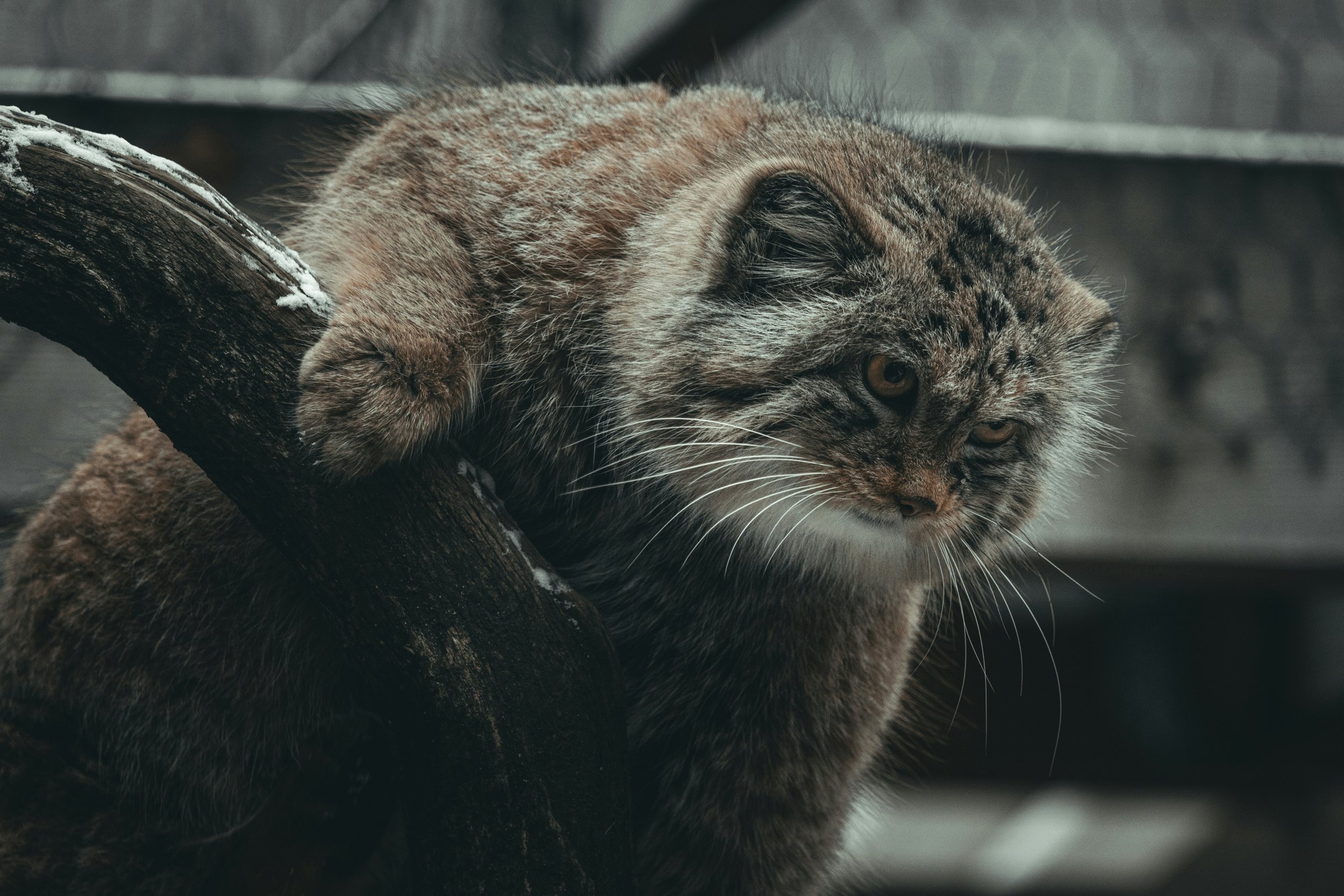
Pallas’s Cat: The Fluffiest Wild Cat
The Pallas’s cat (or Manul) is a small but tough wild cat found in the cold, remote grasslands and rocky regions of Central Asia. With its thick fur, rounded ears, and expressive face, it is often considered one of the most unique-looking felines in the world. Unlike most wild cats, the Pallas’s cat is built for survival in extreme conditions, thriving in high-altitude environments where few predators can compete. However, despite its adaptations, this small but fierce cat faces growing threats that put its future in danger.
Where Do Pallas’s Cats Live?
Pallas’s cats are found in the grasslands, steppes, and rocky mountainous regions of Central Asia, including Mongolia, China, Kazakhstan, Russia, Iran, and parts of the Himalayas. They prefer elevations between 1,500 and 5,000 meters, where they can avoid larger predators and blend into their surroundings.
-
Expanding human settlements, overgrazing by livestock, and mining activities are reducing the Pallas’s cat’s natural habitat, forcing them into smaller, fragmented areas.
-
Though not traditionally hunted for fur, Pallas’s cats are still victims of illegal hunting. They are sometimes killed mistakenly by hunters who confuse them with other species, or they are targeted for traditional medicine.
-
The Pallas’s cat relies on small mammals like pikas for food. However, in some areas, pikas are poisoned as part of pest control programs, which directly impacts the cat’s food source.
-
Warming temperatures and changing weather patterns are affecting the high-altitude ecosystems where Pallas’s cats thrive, making survival even more challenging.
Threats Facing the Pallas’s Cat
Conservation Efforts and How People Are Helping
Research & Monitoring: Since Pallas’s cats are so elusive, conservationists use camera traps and GPS tracking to learn more about their population, behaviour, and threats. This research helps guide protection efforts.
Protected Areas: Some parts of Mongolia, Russia, and China have established nature reserves where Pallas’s cats are protected from poaching and habitat destruction.
Public Awareness & Education: Many people don’t even know the Pallas’s cat exists! Conservation organizations are working to spread awareness about the species and the threats it faces, encouraging more efforts to protect it.

The Pallas’s cat is one of the world’s most fascinating and least understood wild cats. With its adorable yet fierce appearance and ability to survive in extreme environments, it represents the resilience of wild cats everywhere. However, without action, this unique species could face a bleak future. By supporting conservation efforts and spreading awareness, we can help ensure that the Pallas’s cat continues to thrive in its rugged, mountainous home for generations to come.

Next is



